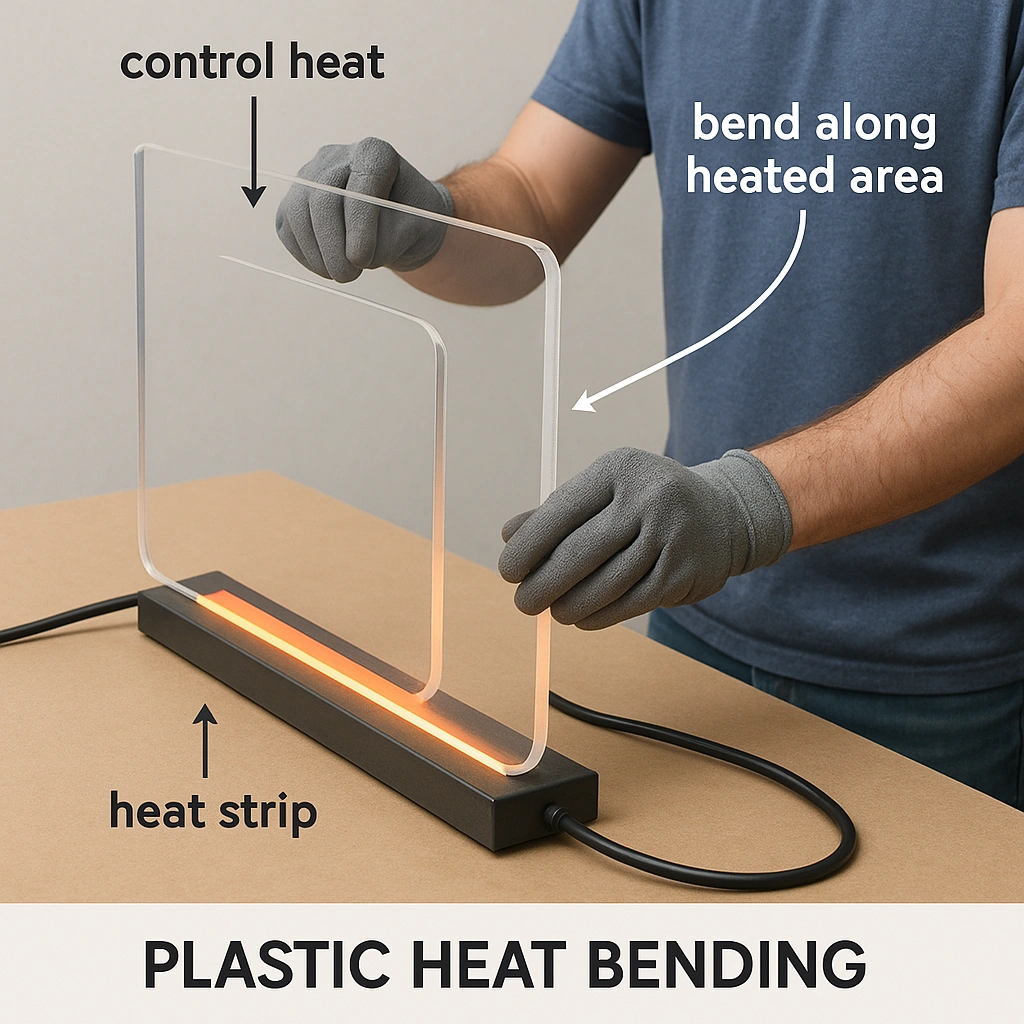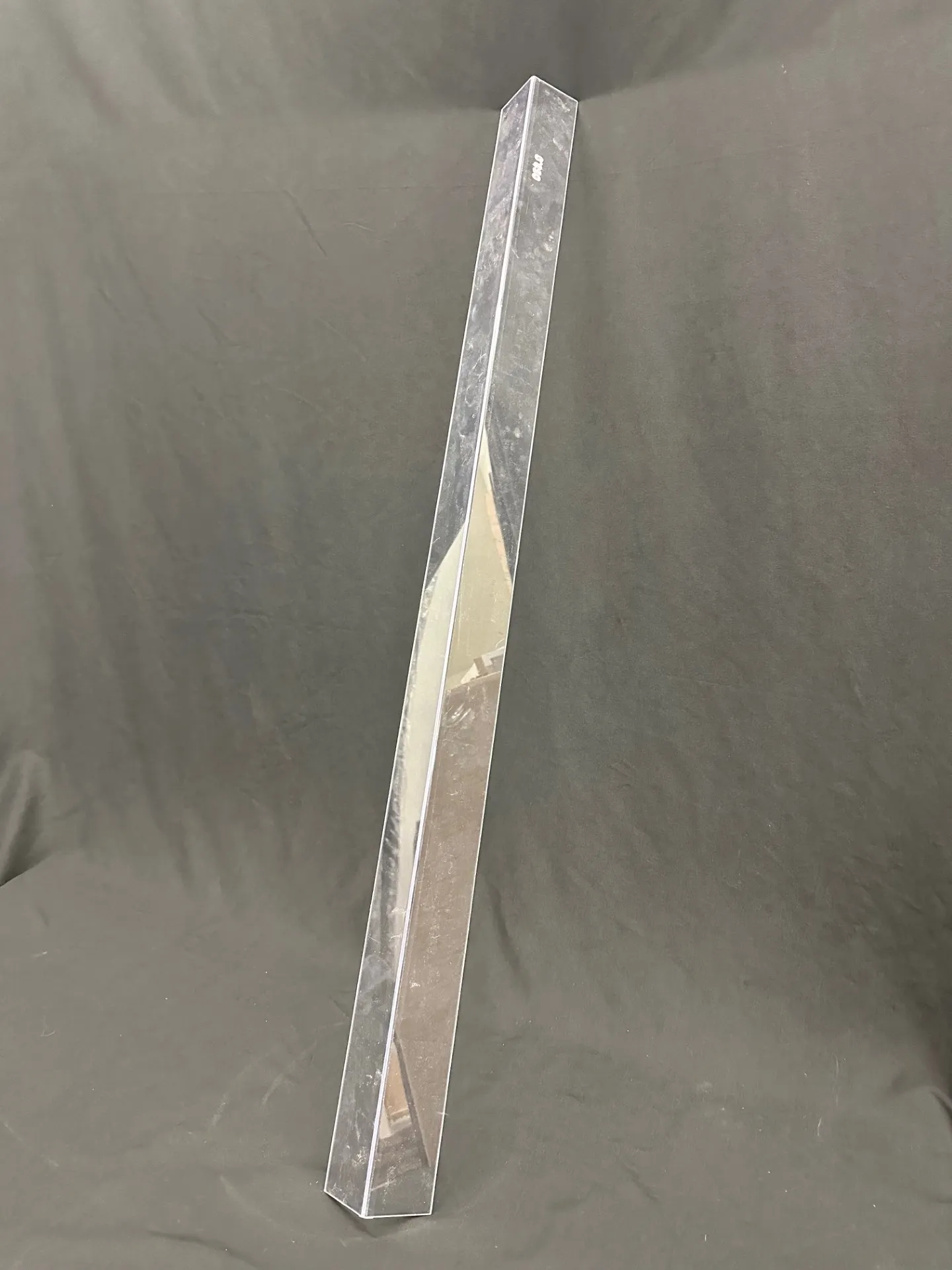This is a Website Demo of the exact site we install for you
Everything You Need To Know About Plastic Bending
Plastic Bending Introduction
Plastic bending is the process by which plastic materials are created using heat and various applications that are necessary for producing a desired bent piece of plastic. If you need custom acrylic displays, industrial components, or specialized plastic enclosures, selecting the right plastic bending service is crucial. In this exciting article, we will discuss the ins and outs of plastic bending, the various techniques, and what to look for in a company for your plastic bending projects.
Plastic heat bending is a process of softening plastic with heat so you can bend it into a new shape without breaking or cracking it.

Here's how it typically works:
- Apply controlled heat (using something like a heat strip, heat gun, or oven) to a specific area of the plastic.
- Once the plastic becomes soft and pliable, bend it along the heated line.
- After bending, hold it in place until it cools and hardens into the new shape.
It's a common technique for making displays, signs, guards, and custom parts — especially with plastics like acrylic (plexiglass), polycarbonate, and PVC.
Examples of products we made using heat bending




Corner guards, bent shapes, ipad display holders and bent signage are examples products we can fabricate using heat bending.
Plastic Bending: What’s that?
Plastic bending is a process of heating and reshaping thermoplastics to reach the desired shape. Bending, in contrast to cutting or molding, allows for the retention of its structural integrity while providing a degree of flexibility in the design process. The process is extensively used in sectors like retail, automotive, medical, and construction.
Plastic Bending Techniques Explained
1. Line Bending
Line bending is the process of applying heat to a line on a plastic sheet, enabling the plastic to be bent at a certain angle. It is mostly used for producing:
- Display stands
- Signage
- Protective shields
- Machine guards
2. Hot Air Bending
Hot air bending allows you to shoot hot air down into the plastic sheet, bending the plastic around your form as it gets soft. This technique is most suited to make:
- Tubes and enclosures
- Prototypes
- Complex designs
3. Oven Forming
A whole plastic piece is heated up at once in an oven, then taken out to mold it, either using molds or jigs. It is good for complex shapes as well as mass production, like:
- Car parts
- Aerospace components
- Industrial housings
4. Vacuum forming with bending
A common technique used together with vacuum forming is bending for creating seamless curves on the three-dimensional plastic parts. Some applications are:
- Packaged materials
- Medical trays
- Customized casings
5. COLD BENDING
Cold bending is when plastic is shaped without heat, usually mechanical pressure. This technique is most suitable for flexible thermoplastics and is commonly used for:
- Tubing
- Thin plastic sheets
- Low-tolerance applications
Common Plastics Used for Bending
Various plastics have different responses to bending. The most widely utilized plastics for bending applications consist of:
- Acrylic (PMMA): Offers transparency often seen in display cases and protective screens.
- Polycarbonate (PC): Strong impact resistance; used for machine guards and covers.
- PVC: An affordable option used in piping and construction.
- Polypropylene (PP): Resistant to chemicals, commonly used for medical and laboratory products.
- ABS: Sturdy and high-strength, great for automotive and industrial parts. Factors to Consider When Choosing a Plastic Bending Company
- Picking the right plastic bending service provider will guarantee you get top-notch products that are customized to meet your requirements. Here are some essential elements to keep in mind:
1. Proficiency and Experience
You should look for a company that has a history of plastic bending. This is why it's so important to experiment with various bending techniques and materials.
2. Accuracy And Quality Assurance
The best service provider would use the latest and tested equipment combined with the best quality assurance standards to ensure that the bends are placed correctly and consistently.
3. Customization Capabilities
Your project might have specific shapes, sizes, and material properties. Confirm that the company can handle custom orders and prototypes.
4. Production Capacity
If you need a single prototype or a large production run, the company should have the capacity to accommodate you.
5. Lead Times & Turnaround
Timely delivery is crucial for the success of a project. Opt for a company whose processes are efficient to reduce lead times.
6. Customer Reviews and Testimonials
Take time to research reviews and testimonials from other customers to understand the company’s reputation and reliability.
The Industries Where Plastic Bending is Used
- Plastic bending is applied in a range of industries. Some of the most popular are:
- Retail: Customized signage, display stands, and product holders.
- Automotive: Dashboard parts, protective shields, enclosures.
- Medical: Rigid trays, custom enclosures and medical device components.
- Construction: Protective barriers, weatherproof panels, and structural components.
- Electronics: Housings, casings and protective covers for sensitive equipment.
Quotation for Plastic Bending Projects
- If you require plastic bending services, here’s how you can get an accurate quote:
- Define Your Project Needs: Include specifications such as dimensions, material type, and bending method.
- Provide a Design or Drawing: Most companies need CAD files or sketches to get a sense of what you need.
- Request a Sample: If you’re ordering in bulk, send for a prototype to make sure the quality is what you’re looking for.
- Compare Quotes: Contact several service providers to compare quotes, turnaround times, and assurances of quality.
- Inquire About Other Services: Some companies provide cutting, polishing and assembly as well, on top of bending.
Conclusion
Plastic bending is a widely used and critical operation in manufacturing custom plastic parts for almost all industries. The choice of the bends, materials, and service provider you choose will play a major role in the success of your bending project. Regardless of whether your project requires a single prototype or a mass-production run, selecting a seasoned, trusted plastic bending company will yield high-quality outcomes.
For a Quote Contact us today!
Start A Conversation
Contact us today for a no obligation quote
Where innovation meets durability – We at Welch Plastics continuously offer high-quality, precision plastic fabrication to transform your ideas into reality. Reach out to see what we can create for you.
Since 2000
Welch Plastics
Where innovation meets durability – We at Welch Plastics continuously offer high-quality, precision plastic fabrication to transform your ideas into reality.
